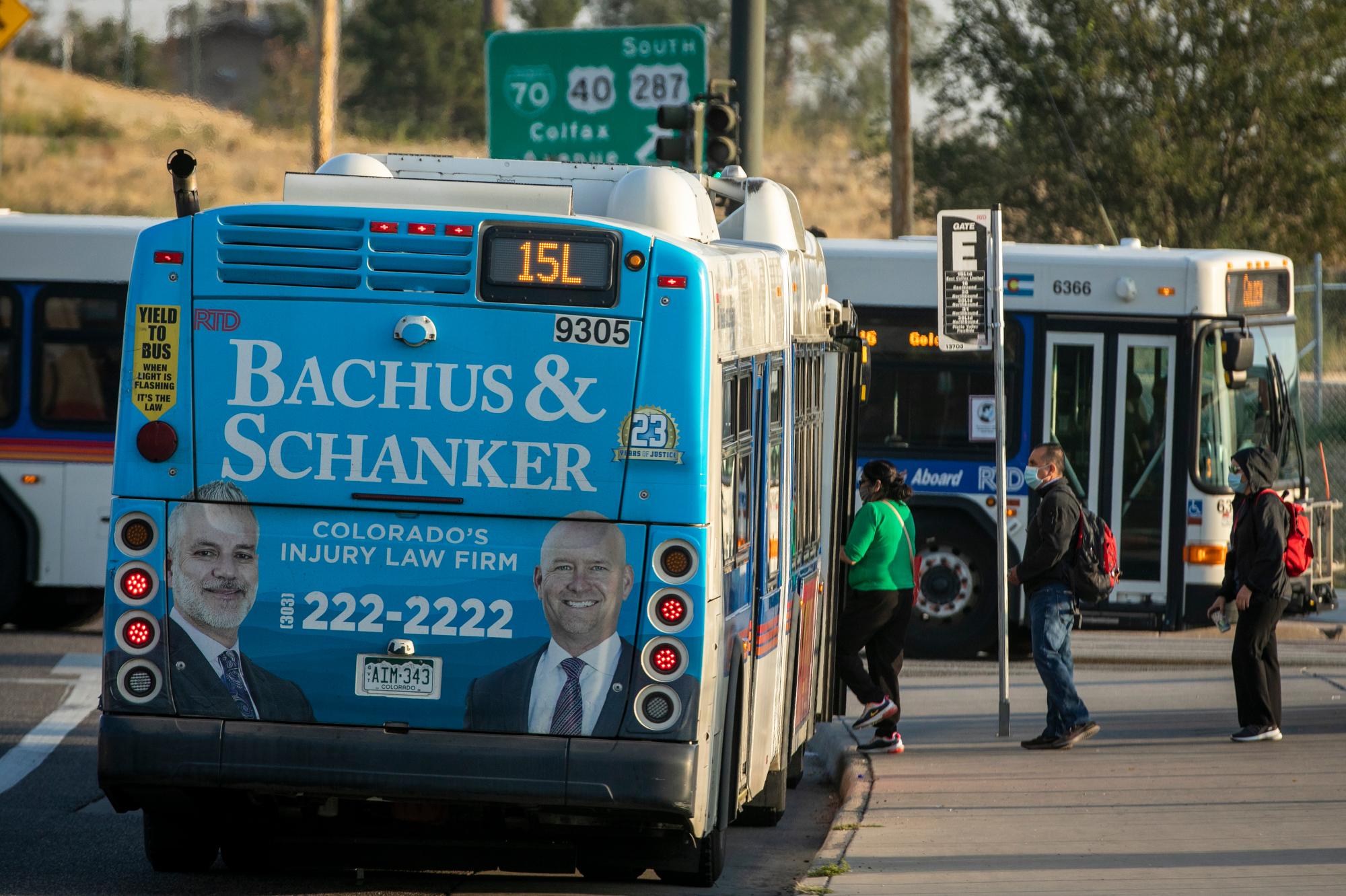
The Regional Transportation District is proposing a dramatic post-pandemic overhaul of its bus system that would focus service on places where passengers are still riding and permanently cut lines in locations where they aren’t.
Ridership on RTD’s buses and trains has been slowly recovering over the last year but is still about half of pre-pandemic levels. The drop is most severe on lines that serve suburbs and suburb-to-downtown commuters, while lines that go through dense areas with low-income residents have stayed relatively steady.
“If you look at the ridership profile and what held up, those are people who really want to be on transit,” said Brian Welch, senior manager for planning technical services at RTD. “And so we really want to serve them.”
If passed by the RTD board of directors, the proposal would start to take effect later this year and would take five years to implement fully. By 2027, about 30 percent of the bus network will have changed — the most significant overhaul since the late 1970s when bus routes were shifted from mirroring historical streetcar lines to a grid pattern most follow today.
Under the overhaul plan, RTD would run buses more frequently throughout the day and on weekends in high-ridership areas by, in some cases, chopping up existing lines.
For example: The popular 0 bus, which runs between Civic Center Station in downtown Denver and Highlands Ranch some 15 miles south, would instead end at Englewood Station and operate every 15 minutes all day and evening. A new 0B line, from Englewood to Highlands Ranch, would operate only every 30 minutes. Some riders of the existing 0 bus, under this proposal, would have to transfer at Englewood Station.
RTD has also proposed dropping more than 20 underperforming bus routes, many of which are in suburban or rural areas and have been suspended since the pandemic began in the spring of 2020. Areas that lose a bus line will get new on-demand FlexRide service that is cheaper to operate in low-density areas, Welch said.
“We can't abandon large sections of our district, because there are people way out there that also really want to stay on the RTD system,” Welch said. “We need to juggle that and balance that.”
Some currently suspended popular express lines in Denver and close suburbs are on the chopping block, too. The 30L on South Federal Boulevard and 16L on West Colfax, for example, would be permanently eliminated. RTD has tried to cut the 16L since the parallel W Line opened in 2013, but customer complaints over the years have compelled RTD to bring it back.
RTD’s light- and commuter-rail lines would not change much. The currently suspended C and F lines would not return, requiring more passengers to switch trains at the Interstate 25 and Broadway station. When finances and staffing allow, remaining rail lines would run more frequently — up to every 10 minutes.
You can see all of the proposed changes in this document. RTD has also posted a map showing the current and proposed systems and is collecting comments from the public. An RTD board committee will discuss the proposal in February with a vote by the full board scheduled for March.
Shontel Lewis, a board member representing northeast Denver, said the plan shows RTD is “prioritizing equity — and not in words, but in action.”
“It's probably gonna be a painful and uncomfortable experience,” she said. “There might be some tears, there might be some joys as well. But I think it's long overdue, quite frankly. I think we have an opportunity to put our money in the places in which people are riding and to figure out other solutions where people aren’t.”
Board member Shelley Cook of Arvada also supports the proposal's emphasis on transit-dependent riders but said RTD still has an obligation to serve areas with no bus or rail service.
“It's kind of a chicken and egg thing. How do you know where there would be ridership if you don't have the route currently, or if you never had the route?” she said. “I haven't given up on getting more people into various forms of [transit]. I think that's a goal we really have to embrace, given what we're facing with climate change and congestion.”
The proposal assumes RTD can return to 85 percent of pre-pandemic service, which will only be possible if it can hire more drivers and other essential workers. And that diminished level of transit will not be enough for the state to meet its climate goals, said Matt Frommer, senior transportation associate at the Southwest Energy Efficiency Project.
“Eighty-five percent of 2019 service ain't gonna cut it,” he tweeted.









